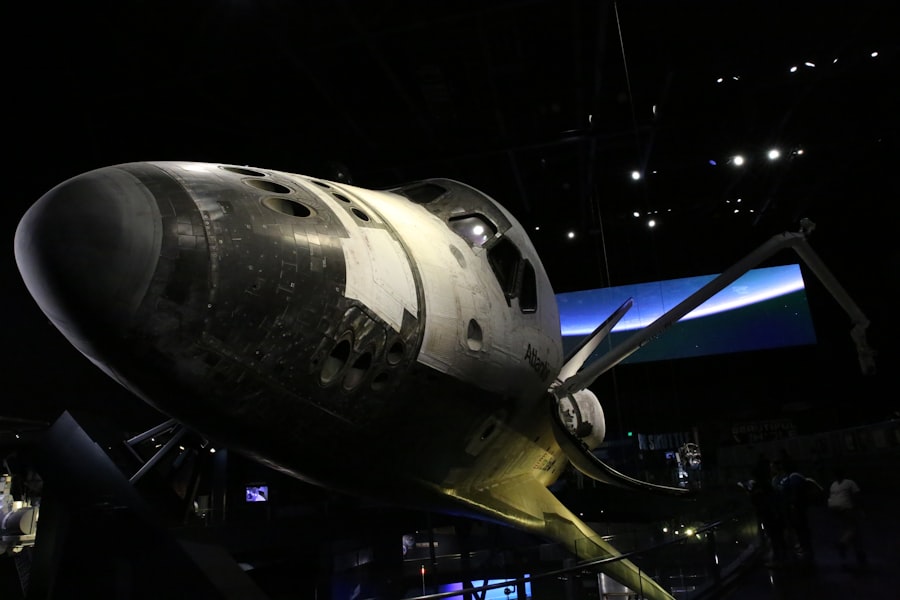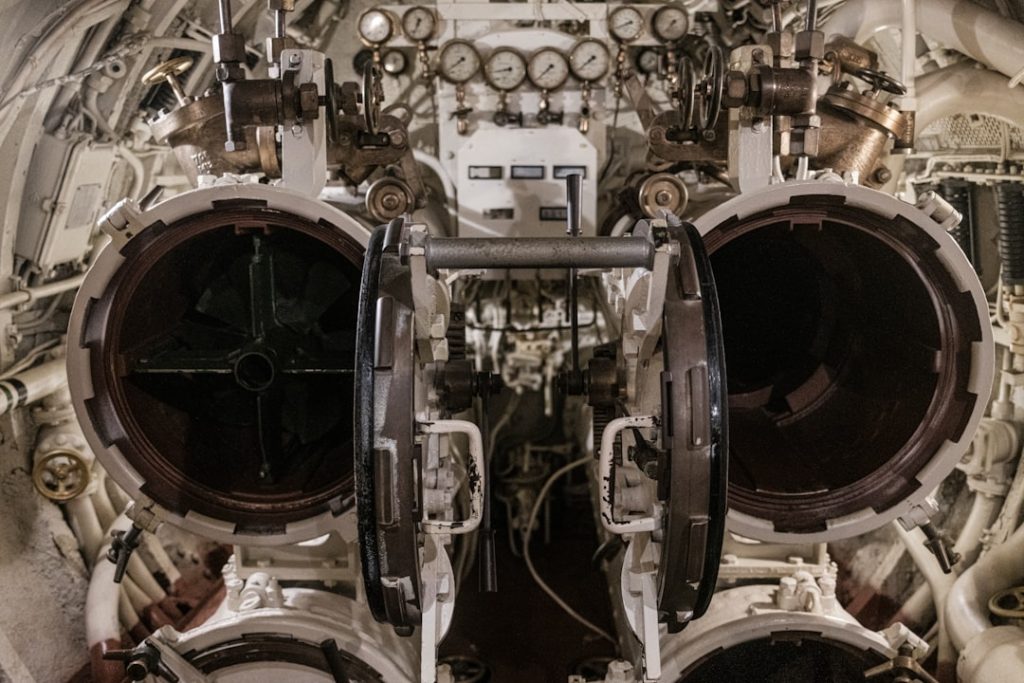Aeronautical and astronautical engineering are two closely related fields that focus on the design, development, and operation of aircraft and spacecraft. Aeronautical engineering primarily deals with vehicles that operate within the Earth’s atmosphere, such as airplanes and helicopters, while astronautical engineering encompasses the technology and systems used for space travel, including rockets, satellites, and space stations. Both disciplines require a deep understanding of various scientific principles, including fluid dynamics, thermodynamics, materials science, and control systems.
The integration of these principles allows engineers to create vehicles that can withstand the extreme conditions of flight and space travel. The evolution of aeronautical and astronautical engineering has been marked by significant milestones, from the Wright brothers’ first powered flight in 1903 to the Apollo moon landings in the late 1960s. Today, these fields are at the forefront of technological innovation, driven by the need for more efficient, safer, and environmentally friendly modes of transportation.
As global demand for air travel continues to rise and interest in space exploration grows, the role of engineers in these sectors becomes increasingly vital. The challenges they face are complex and multifaceted, requiring a blend of creativity, technical expertise, and a commitment to sustainability.
Key Takeaways
- Aeronautical and Astronautical Engineering involves the design, development, and testing of aircraft and spacecraft.
- Current challenges in the field include reducing emissions, improving fuel efficiency, and ensuring safety in space travel.
- Advancements in materials and manufacturing processes have led to the development of lighter and stronger materials for aircraft and spacecraft construction.
- Artificial intelligence and automation are revolutionizing the industry by improving navigation systems and streamlining manufacturing processes.
- Sustainable and eco-friendly technologies, such as electric propulsion and biofuels, are being developed to reduce the environmental impact of air and space travel.
Current Challenges and Innovations in Aeronautical and Astronautical Engineering
The aeronautical and astronautical engineering sectors are currently grappling with several pressing challenges. One of the most significant issues is the environmental impact of aviation. The aviation industry is responsible for a substantial portion of global greenhouse gas emissions, prompting engineers to seek innovative solutions to reduce this footprint.
This includes developing more fuel-efficient engines, exploring alternative fuels such as biofuels or hydrogen, and designing lighter aircraft structures that consume less energy during flight. Innovations in aerodynamics also play a crucial role; for instance, the use of advanced computational fluid dynamics (CFD) allows engineers to optimize aircraft shapes for reduced drag. In the realm of astronautics, the challenges are equally daunting.
The increasing frequency of space missions raises concerns about space debris, which poses a threat to both operational satellites and crewed missions. Engineers are innovating ways to mitigate this risk through improved tracking systems and debris removal technologies. Additionally, the quest for sustainable life support systems for long-duration space missions is paramount.
Innovations in closed-loop life support systems that recycle air and water are being developed to support human life on missions to Mars and beyond. These challenges necessitate a collaborative approach among engineers, scientists, and policymakers to ensure that advancements in technology align with environmental stewardship.
Advancements in Materials and Manufacturing Processes

The materials used in aeronautical and astronautical engineering have undergone significant advancements over the past few decades. Traditional materials like aluminum and steel are increasingly being replaced or supplemented by advanced composites such as carbon fiber reinforced polymers (CFRP) and titanium alloys. These materials offer superior strength-to-weight ratios, which are critical for improving fuel efficiency in aircraft and enhancing the structural integrity of spacecraft.
For example, the Boeing 787 Dreamliner utilizes CFRP extensively in its fuselage and wings, resulting in a lighter aircraft that consumes less fuel. Manufacturing processes have also evolved dramatically with the advent of additive manufacturing, commonly known as 3D printing. This technology allows for the rapid prototyping of complex components that would be difficult or impossible to produce using traditional methods.
In aeronautics, 3D printing is being used to create lightweight parts with intricate geometries that enhance performance while reducing material waste. In astronautics, NASA has successfully tested 3D-printed rocket engine components that can withstand extreme temperatures and pressures. This shift towards additive manufacturing not only streamlines production but also opens up new possibilities for customization and innovation in design.
The Impact of Artificial Intelligence and Automation on Aeronautical and Astronautical Engineering
| Metrics | Impact |
|---|---|
| Efficiency | AI and automation have improved the efficiency of aeronautical and astronautical engineering processes, leading to faster design iterations and reduced time-to-market for new products. |
| Safety | The implementation of AI and automation has enhanced safety in the aerospace industry by enabling predictive maintenance, autonomous flight systems, and real-time risk assessment. |
| Cost | AI and automation have helped in reducing operational costs by optimizing fuel consumption, streamlining maintenance schedules, and minimizing human error in complex engineering tasks. |
| Innovation | These technologies have facilitated innovation in aeronautical and astronautical engineering by enabling the development of advanced autonomous vehicles, unmanned aerial systems, and space exploration technologies. |
| Skills | The impact of AI and automation has led to a shift in the required skill set for engineers, with an increased emphasis on data analysis, machine learning, and programming skills. |
Artificial intelligence (AI) and automation are transforming aeronautical and astronautical engineering in profound ways. In aeronautics, AI is being integrated into flight control systems to enhance safety and efficiency. For instance, advanced algorithms can analyze vast amounts of data from sensors in real-time to optimize flight paths, predict maintenance needs, and even assist pilots during critical phases of flight.
The implementation of AI-driven autopilot systems has the potential to reduce human error, which is a leading cause of aviation accidents. In the field of astronautics, AI plays a crucial role in mission planning and execution. Autonomous spacecraft equipped with AI can make real-time decisions based on environmental conditions or unexpected challenges during missions.
For example, NASA’s Mars rovers utilize AI to navigate the Martian terrain autonomously, allowing them to conduct scientific research without constant human oversight. Furthermore, AI is being employed in data analysis for space missions, enabling scientists to process large datasets from telescopes or satellite imagery more efficiently than ever before. The integration of AI not only enhances operational capabilities but also paves the way for more ambitious exploration endeavors.
Sustainable and Eco-Friendly Technologies in Aeronautical and Astronautical Engineering
Sustainability has become a central theme in both aeronautical and astronautical engineering as industries strive to minimize their environmental impact. In aviation, there is a growing emphasis on developing eco-friendly technologies that reduce emissions and noise pollution. Electric propulsion systems are gaining traction as a viable alternative to traditional jet engines.
Companies like Airbus are exploring hybrid-electric aircraft designs that could revolutionize short-haul flights by significantly lowering carbon emissions. In the realm of space exploration, sustainability is equally critical. The concept of “in-situ resource utilization” (ISRU) is gaining attention as engineers seek ways to use local resources on celestial bodies for fuel, water, and building materials.
For instance, extracting water from lunar ice or Martian soil could support long-term human presence on these bodies while reducing the need for resupply missions from Earth. Additionally, efforts are underway to develop reusable launch systems that can significantly cut costs and reduce waste associated with space travel. SpaceX’s Falcon 9 rocket exemplifies this approach by successfully landing its first stage after launch for reuse.
The Future of Space Exploration and Colonization

The future of space exploration is poised for unprecedented growth as both governmental agencies and private companies invest heavily in ambitious projects aimed at exploring beyond Earth’s orbit. NASA’s Artemis program aims to return humans to the Moon by the mid-2020s as a stepping stone for future Mars missions. This initiative not only seeks to establish a sustainable human presence on the Moon but also aims to test technologies that will be essential for long-duration missions to Mars.
Private companies like SpaceX are also playing a pivotal role in shaping the future of space exploration. With its Starship program designed for interplanetary travel, SpaceX envisions a future where humans can colonize Mars within the next few decades. The development of technologies such as life support systems capable of sustaining human life on Mars is critical for this vision.
Moreover, international collaborations are becoming increasingly important as countries recognize that space exploration transcends national boundaries; partnerships between nations can pool resources and expertise to tackle complex challenges associated with deep-space exploration.
Career Opportunities and Education in Aeronautical and Astronautical Engineering
The fields of aeronautical and astronautical engineering offer a diverse array of career opportunities for aspiring engineers. Graduates can find positions in various sectors including aerospace manufacturing companies, government agencies like NASA or ESA (European Space Agency), research institutions, and private aerospace firms. Roles may range from design engineers who create new aircraft or spacecraft designs to systems engineers who ensure that all components work together seamlessly.
Education plays a crucial role in preparing individuals for careers in these fields. A bachelor’s degree in aerospace engineering or a related discipline is typically required for entry-level positions; however, many professionals pursue advanced degrees to specialize further or engage in research activities. Internships during academic studies provide invaluable hands-on experience that enhances employability upon graduation.
Additionally, professional organizations such as the American Institute of Aeronautics and Astronautics (AIAA) offer networking opportunities, resources for continuing education, and forums for sharing knowledge among professionals in the field.
Ethical and Regulatory Considerations in Aeronautical and Astronautical Engineering
As aeronautical and astronautical engineering continues to advance rapidly, ethical considerations become increasingly important. Engineers must navigate complex issues related to safety, environmental impact, and societal implications of their work. For instance, the development of autonomous aircraft raises questions about accountability in case of accidents or malfunctions—who is responsible when an AI system makes a critical decision?
Furthermore, as space exploration expands into commercial ventures, ethical dilemmas surrounding resource utilization on celestial bodies arise; questions about ownership rights over extraterrestrial resources must be addressed. Regulatory frameworks also play a vital role in ensuring safety and compliance within these industries. National aviation authorities set stringent regulations governing aircraft design, operation, maintenance, and pilot training to ensure public safety.
Similarly, international treaties govern activities in outer space; agreements such as the Outer Space Treaty outline principles for peaceful exploration while preventing harmful practices like space militarization or contamination of celestial bodies. As technology evolves at an unprecedented pace, regulatory bodies must adapt their frameworks to address emerging challenges while fostering innovation within aeronautical and astronautical engineering fields.


